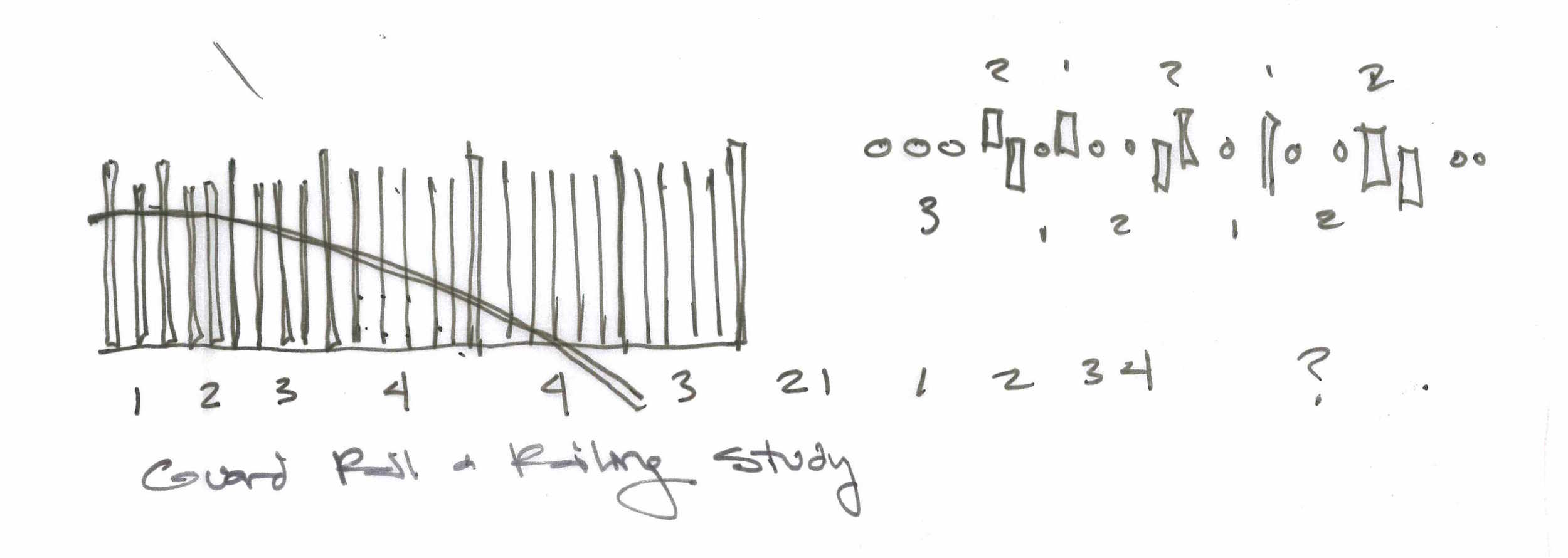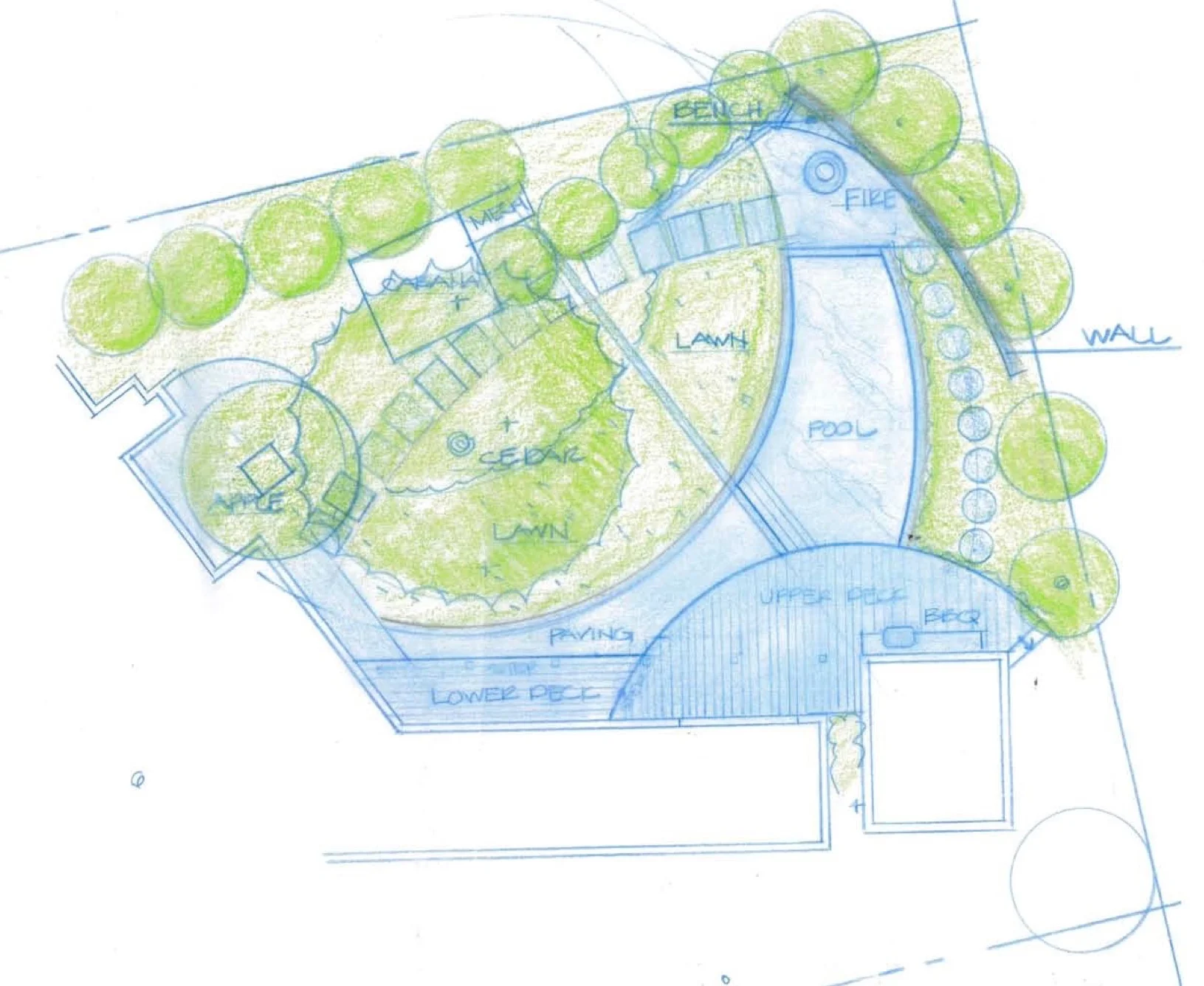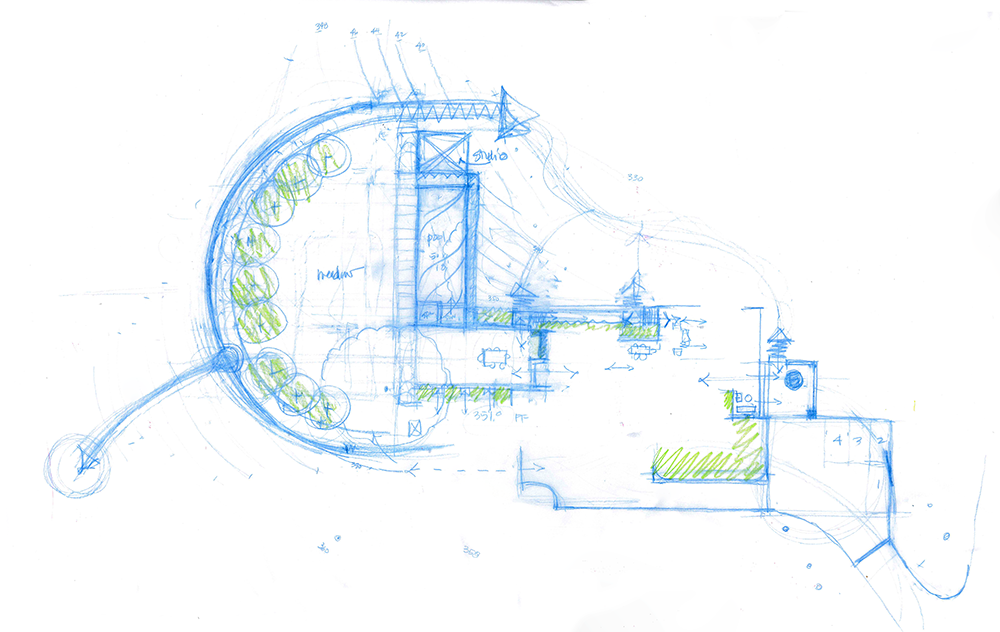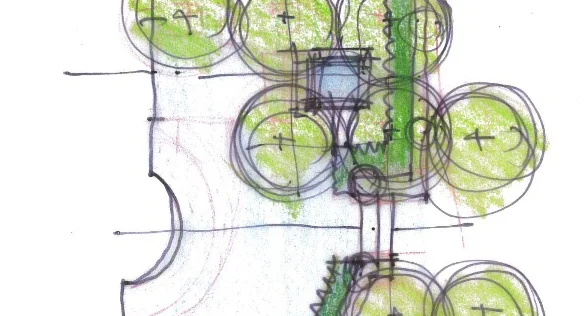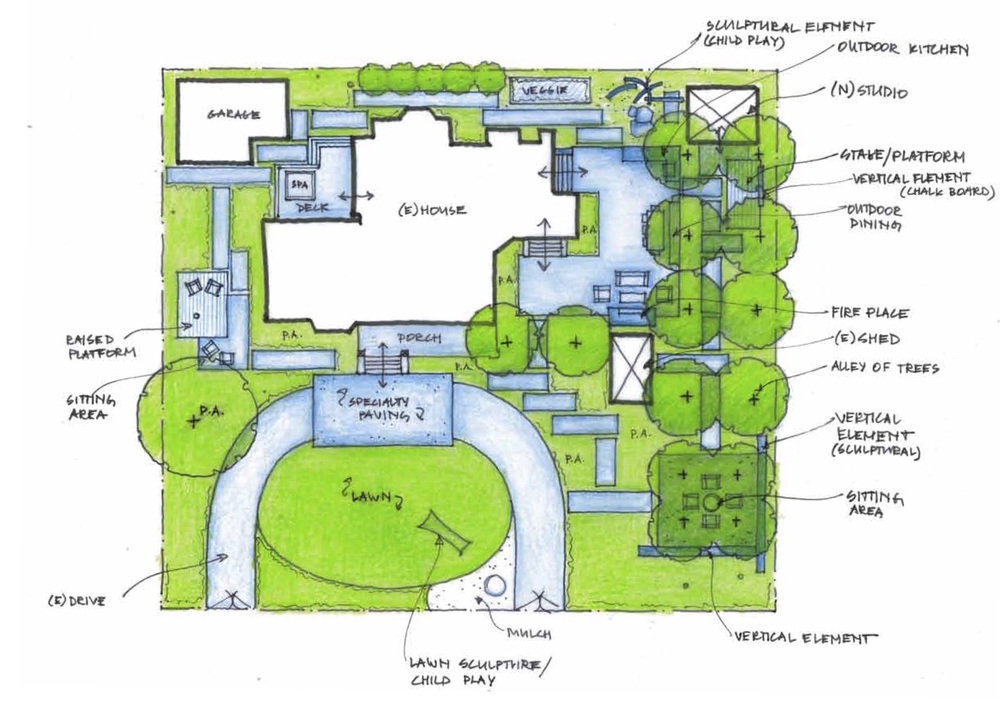Garden Geometries
Join Founding Partner Vera Gates as she explores geometry as a design tool, and how ideas evolve and emerge as unique garden designs.
GARDEN GEOMETRIES, AN INTRODUCTION
"Within the Arterra Studio, we are engaged in an active dialog around the design process, and how ideas evolve. Emerging designers want very much to expand their reach and delve more deeply into design. They are comfortable responding to functional requirements, but struggle with form generation, especially the “big picture” ideas that give a place great meaning."
GARDEN GEOMETRIES: POINT
"We begin the design process simply, as a study of point and line. This allows us to calibrate the site, the architecture and our design intentions as we get our bearings. Pretty quickly the design evolves and expands into other forms, in direct response to this early exploration."
GARDEN GEOMETRIES: LINE
"The concept of line is one of the simplest and most elegant of design tools. Primarily used as a basic ordering system, the line typically evolves into a series of other forms to create a compositional whole."
GARDEN GEOMETRIES: CURVING LINE
"Of all the garden geometries, the curving line is by far the most challenging and rewarding. A good strong curve is a magical thing and very powerful. People are drawn to this form like no other. Perhaps because it is so mesmerizing and visually engaging. Perhaps because it is such a comforting shape, enveloping us in the gesture of embrace."
GARDEN GEOMETRIES: RECTANGULAR FORMS
"In a primarily rectilinear design, the challenge is creating complexity and design interest with such a simple shape.
We respond by manipulating the form in scale and dimension, lifting it up at times and replicating it at varying sizes, to create a sophisticated composition of forms."
GARDEN GEOMETRIES: GRID/OFFSET GRID
"The grid is most interesting when not entirely visible and when it is articulated at varying scales. It can emerge and disappear throughout the garden. The form is comprehensible and interesting, but not boring. The design can take on an additive or subtractive quality, depending upon how the grid is interpreted."
GARDEN GEOMETRIES: THE CIRCLE
"Seldom used, playful and magical, the circular form is pure pleasure to design with.
We use the circle sparingly and quite intentionally, either at a grand scale for ordering space, or a design aspect where we playfully repeat the form or combine the circle with other forms to activate it."
GARDEN GEOMETRIES: THE SPIRAL
"Often we combine the spiral with other forms, finding that these combinations make for some fascinating design forms. Straight lines, radiating out from the center of the spiral allow us to intercept, bisect and offset the spiral, effectively jogging it around site constraints. This creates a wonderful rhythm and playful tension that is comprehensible, engaging and interesting."
GARDEN GEOMETRIES: COMBINING FORMS
"As with basic geometric forms, the combinations have rules of engagement. Governed by perceptions of order and beauty, the design is an effort to interrelate and unify the whole into a comprehensible and beautiful sequence of space."
GARDEN GEOMETRIES: ORDERING PRINCIPLES
"We have explored basic geometric form generation and shown how these forms manifest within garden design. We have looked at very simple forms and also more complex combinations. But now that we know how to begin, how do we know where to end? A foundational understanding of basic ordering principles allows us to design freely and create sophisticated geometric forms that work."
GARDEN GEOMETRIES: CENTERING AND SITE LINES
"The hardest part about designing a garden is knowing how and where to begin. The first steps for us are picking up a pencil and sketching on trace. All our design evolves from here.
We begin by generating a series of organizing site lines — sort of thought lines. These lines are gestural, and both straight and curving. They help us organize our thoughts and start drawing in a meaningful way."
GARDEN GEOMETRIES: SYMMETRY
"There are two basic options: symmetrical and asymmetrical. The site itself, the architecture and the design intentions will inform which you will choose.
A symmetrical design is created around a central axis line, with everything on one side of the axis being mirrored exactly on the other. This works great if you have a symmetrical space and the architecture of the house is laid out in a symmetrical way."
GARDEN GEOMETRIES: ASYMMETRY
"Asymmetrical design can be a very dynamic and responsive solution to real site conditions and natural aspects. This ordering system allows the design to respond to the site as it exists and balance existing features with new, proposed features. It is easy to incorporate focal elements where needed either functionally or visually, while maintaining a measurable overall form. "
GARDEN GEOMETRIES: RHYTHM
"We achieve rhythm through a thoughtful combination of geometric forms which are repeated and articulated. The effect is transformative and memorable as we, the viewer, perceive these rhythms and are engaged by them."



